كيف يعمل جهاز المناعة لدى الإنسان؟ منقول من
وصلات خارجية
- المناعة - على موقع الطبي
- كيف يعمل جهاز المناعة لدى الإنسان؟ - جريدة الرياض
- (بالإنجليزية) كيف يعمل جهاز المناعة - "هاو ستف ووركس"
- الجهاز المناعي ووظائفه في الجسم.

د. مروان ياسين شاهين
![]()
جهاز المناعة هو ذلك النظام المعقد المسؤول عن حماية جسم الانسان من ملايين الأجسام الغريبة مثل البكتيريا والفطريات والفيروسات والطفيليات والجراثيم والسموم وغيرها التي تهاجم أجسامنا في كل وقت وتعتبرنا المرتع الأساسي لنموها.
ولفهم مدى أهمية الجهاز المناعي لدينا - وأنه من نعم الله الكثيرة التي لاتحصى - فلنتذكر سويا ماذا يحدث لأي شيء بعد وفاته (حيث يتوقف عمل جهاز المناعة) خلال ساعات قليلة تهاجم البكتيريا والفطريات والجراثيم الجثة وخلال أسابيع قليلة تتحلل الجثة ولا يبقى منها شيء وما كان لهذا أن يحدث بوجود جهاز المناعة. عند مهاجمة فيروس أو بكتيريا لنا نتعرض لمضاعفات صحية من هذا الهجوم فعلى سبيل المثال بكتيريا
(streptococcus) تفرز مواد سامة تؤدي الى التهاب الحلق أما فيروس شلل الأطفال يطلق سموم تدمر الخلايا العصبية في النخاع الشوكي ومن ثم تؤدي للشلل، وفي المقابل هناك البكتيريا المفيدة مثل ملايين البكتيريا في أمعائنا والتي تساعدنا على هضم الطعام ولكن يمكن لهذه البكتيريا أن تكون ضارة اذا ما دخلت الى دمنا.
البكتيريا والفيروسات عموماً هي أكثر مسببات المرض في الإنسان ومن أهم وظائف الجهاز المناعي حماية الجسم من هذه الميكروبات ويقوم بذلك بعدة وسائل:
يبني حاجز يمنع البكتيريا أو الفيروس من دخول جسمنا.
إذا ما دخلت البكتيريا أو الفيروس الى جسم الانسان يعمل جهاز المناعة على تمييزها والقضاء عليها قبل أن تتكاثر وتبدأ بافراز سمومها.
إذا ما نجحت بدخول الجسم والتكاثر فإن جهاز المناعة يعمل باستنفار حتى يخلص الجسم منها. 
د. مروان ياسين شاهين
ولجهاز المناعة وظائف أخرى عديدة منها التعرف على الخلايا السرطانية في المراحل الأولى والتخلص منها في الكثير من الحالات دون أن نلاحظه وهي مهمة جليلة كما ترون.
ما يتكون الجهاز المناعي
الجلد: وهو أكبر عضو في جسم الانسان وجزء هام من جهازنا المناعي ويعمل كحاجز بين الأمراض وجسمنا ويفرز الجلد مواد مضادة للبكتيريا وهذا يفسر لماذا لا نستيقظ في الصباح ونجد طبقة من الطفيليات على جلدنا هذا لأن معظم الطفيليات تموت فور ملامستها للجلد.
وبما أن الأنف والفم والعيون مداخل محتملة للجراثيم تقوم الدموع والمواد المخاطية على حمايتنا حيث تحتوي على أنزيمات تحطم جدار الخلية في معظم البكتريا. كما تلتصق الميكروبات التي تدخل من الأنف إلى الرئة بالمخاط حتى اللعاب يحتوي على مضاد للبكتريا.
يعمل جهاز المناعة على مدار الساعة وبآلاف الطرق المختلفة لحمايتنا طوال حياتنا ومن الغريب أننا لا نعرف عنه وعن مكوناته شيئا فأنت مثلاً تعرف أن في صدرك قلب ورئتين ولكن هل سمعت عن الغدة التوتة؟! “Thymus Gland”
مكونات الجهاز المناعي الأساسية هي:
الغده التوتة thymus gland
الطحالspleen
الجهاز الليمفاوي lymph system
نخاع العظم bone marrow
الأجسام المضادة antibodies
الجهاز المتتالي complement system
الهرمونات hormones
ولأهمية الموضوع سوف نشرح كل مكون باختصار.
الجهاز الليمفاوي:
lymph system
المعروف لدى الأمهات فعندما يحدث تورم بالرقبة عند الطفل نسميه تورم غدد ليمفاوية، إن الغدد الليمفاوية ليست هي كل مكونات الجهاز الليمفاوي بل جزء منه فهناك الأوعية الليمفاوية التي تنتشر في الجسم كله تماماً مثل الأوعية الدموية. إن الليمف عبارة عن سائل رائق أبيض مكون من ماء ومغذيات فهو عبارة عن بلازما الدم أي السائل المكون للدم اذا ما حذف منه كريات الدم الحمراء والبيضاء، الأوعية الليمفاوية الصغيرة تجمع الليمف الى اوعيه اكبر الى الغدد الليمفاويه ليتم معالجة هذا السائل حيث تحتوى هذه الغدد على أنسجة مصفية وعدد كبير من الخلايا الليمفاوية التي تبتلع البكتيريا وعندما يكون هناك غزو بكتيري كبير تتورم الغدد الليمفاوية التي تخدم أحد الأماكن في الجسم نتيجة ابتلاع عدد هائل (ملايين) من البكتيريا فى هذا المكان وتكون مؤلمة وهو دليل ملموس على أن جهاز المناعة يؤدى دوره! وبمجرد تصفية السائل الليمفاوي في الغدد الليمفاوية يدخل مرة أخرى إلى الدم (بعد أن تمت معالجته)
الغده التوتة: thymus gland
ان هذه الغده التى تشبه ثمرة التوت في الشكل والحجم موجودة في الصدر بين عظام الثدي والقلب. إنها المسئولة عن إنتاج خلايا» تي» وهى هامة جداًَ في حديثي الولادة والأطفال وبدونها ينهار جهاز المناعة لحديثي الولادة و يموتون ولكن أهميتها تقل في البالغين حيث تقوم أعضاء أخرى بالمهمة ولكنها مهمة أيضاً لإنتاج «خلايا تي» التي سنرى أهميتها لاحقاً.
الطحال: spleen
إن الطحال يقوم بتصفية الدم من الخلايا الغريبة وكذلك الخلايا الهرمة من كريات الدم الحمراء والبيضاء ويستبدلها بأخرى شابة.
والأشخاص الذين يتم عندهم استئصال الطحال لأي سبب مثل حادث مثلا يكونون معرضين للمرض أكثر من غيرهم.
نخاع العظم bone marrow:
إن نخاع العظم مسئول عن انتاج خلايا الدم الجديدة البيضاء والحمراء وبالنسبة للحمراء فإنه يقوم بتصنيعها بالكامل داخل النخاع ثم تضخ فى الدم أما بالنسبة للكريات البيضاء فإنها تنضج في أماكن أخرى. إن النخاع ينتج الخلايا الأصلية Stem cells خلايا النشأة وتسمى كذلك لأنها أصل الخلايا وتستطيع التحور الى أنواع عديدة من الخلايا وكذلك تتحول الى أنواع متخصصة من خلايا الدم البيضاء.
الأجسام المضادة: antibodies
تنتج الأجسام المضادة بواسطة كريات الدم البيضاء وهى عبارة عن سلسلة من جزيئات. البروتين هناك ملايين من الأجسام المضادة المختلفة موجودة في الدم كل منها حساس لمسبب معين، إن هذه الجزيئات يتم تصنيعها بالكبد وتنشط هذه البروتينات بواسطة خلايا اخرى من الكريات البيضاء عندما يهاجم مسبب معين «بكتيريا أو سم أو فيروس» فإنها تسبب تحلله وابتلاعه ثم ازالته.
الهرمونات: hormones
هناك العديد من الهرمونات التي يتم فرزها بواسطة جهاز المناعة وعموماً تسمى هرمونات ليمفية lymphokins وهناك أيضا هرمونات تثبيط جهاز المناعة وأشهرها الكورتيزينات) لذلك ينصح دائما بتعاطي هذه المركبات بحرص وتحت إشراف طبي) إن هرمون تايموسين الذي يفرز بواسطة الغدة التوتة يشجع إنتاج الخلايا الليمفاوية (نوع من كريات الدم البيضاء) وهناك هرمون انترليوكين interleukins وهى أنواع تفرز بواسطة كريات الدم البيضاء وهى عديدة فهناكinterleukin1 انترليكين1 والذي يفرز بواسطة الخلايا الملتهمة عندما يتم ابتلاع جسم غريب (ميكروب مثلاً) ليعمل على تحلله ولهذا الهرمون أثر جانبي مثير للاهتمام فهو يسبب ما يعرف بالحمى (ارتفاع درجة حرارة الجسم) الإحساس بالتعب وهى وسيلة لقتل بعض البكتيريا.
عامل تحلل الأورام : إن هذا الجزء ينتج أيضاً من الخلايا الملتهمة ويستطيع قتل خلايا الأورام وتحللها وكذلك يؤدى إلى الالتئام فيما بعد .
الانترفيرون: interferon إن هذا الجزء البروتين هو مضاد الفيروسات الأساسي في جهاز المناعة ويتم إنتاجه بواسطة معظم خلايا الجسم وتعطى الخلايا إشارات لبعضها البعض هي عبارة عن مركبات كيماوية عند اكتشاف فيروس ووظيفة الانترفيرون إيقاف تكاثر الفيروس .
الخلايا الليمفية: lymphocytes
تبلغ حوالى 30-40%من كل الخلايا البيضاء وهى تتحول الى خلايا ملتهمة كبرى عند حدوث غزو بكتيرى للجسم .كل الخلايا البيضاء تبدأ فى نخاع العظم على هيئة خلايا أصلية - نخاعية - ثم تتحول إلى الأنواع المختلفة بعد ذلك عندما تنضج.
الخلايا الملتهمة الكبرى: macrophages
هي أكبر الخلايا النوعية للكريات البيضاء وهي متخصصة بحسب العضو الذى تعمل فيه فهناك النوع الموجود في الرئتين ينتشر بين الأنسجة والحويصلات الهوائية تلتهم جزيئات الأتربة والدخان التي يتم استنشاقها (المدخنون يستهلكون قدراً كبيراً من هذه الخلايا ويجهدونها وبالتالي يؤثر ذلك سلباً على جهاز المناعة هذا غير الأضرار الأخرى) وكذلك بعض البكتيريا والميكروبات التي تنجح في الوصول إلى هذه الأماكن.
الخلايا الليمفاوية: lymphocytes
هذه الخلايا تتولى معظم المهام فى مجابهة البكتيريا والفيروسات, إنها تبدأ من نخاع العظم وتسمى عندها خلايا «بي» والتي تبدأ من غدة التوتة تسمى خلايا «تي» وكلاهما موجود فى تيار الدم ولكنهما مركزين فى الأنسجة الليمفاوية مثل الغدد الليمفاوية والطحال وغدة التوتة بالصدر وكذلك يوجد منها بكثرة في الأنسجة الليمفاوية بالجهاز الهضمي.
خلايا بي: B-cells
عندما تستثار تنضج لتصبح خلايا بلازما والتي تنتج الأجسام المضادة وذلك إن خلية بي خاصة تتحول إلى نموذج جرثومة معينة وتكون لها جسم مضاد وعندما تدخل هذه الجرثومة(الحقيقية) إلى الجسم تميزها خلايا بي وتنتج من الأجسام المضادة لها ملايين مما يؤدى إلى توقف تأثيرها وتحللها.
خلايا تى: T-cells
أما خلايا تى فتهاجم هذه الخلايا المعادية وتقتلها وتسمى عندها الخلايا القاتلة وتستطيع أن تتحرى وتبحث عن الخلايا التي تحمل فيروسات وفي الحال تهاجمها وتقتلها وهناك نوعان من خلايا تي: خلايا تي المساعدة وخلايا تي المثبطة أما الخلايا المساعدة فهي لازمه لتتمة عمليات خلايا بي والأجسام المضادة والخلايا المثبطة هي للضبط والسيطرة على رد الفعل عند الجهاز المناعي بحيث لاتنفلت الأمور ويكفى أن تعرف أهمية دور هذه الخلايا أنه في حالة وجود خلل بها يهاجم جهاز المناعة بعض أنسجة الجسم ويتعامل معها على أنها معاديه! وينتج عن ذلك أمراض معروفة مثل الروماتويد.
ولكن في العادة والطبيعي يؤدي جهاز المناعة دوره بشكل مذهل للغاية منتهى التنسيق كل هذه الخلايا التي ذكرناها وأكثر تؤدي دورها بشكل متناسق ومتضافر فى سلسلة معقدة من العمليات الكيميائية الدقيقة (وفي أنفسكم أفلا تبصرون) «الذاريات».
بسبب أن كريات الدم البيضاء هى الأهم في جهاز المناعة فإنها تستخدم كمقياس لكفاءة هذا الجهاز فعندما تسمع أن شخصاً مناعته جيدة أو ضعيفة فإن ذلك عادة مايتم حسابه بتحليل وعد كريات الدم البيضاء كما ونوعا يراوح العدد الطبيعى لها بين 4000-11000 4000 - 11000 فى الميكروليتر ونسبة الخلايا تي المساعدة إلى خلايا تي المثبطة 1.8-2 ومعنى ذلك أن هناك توازن دقيق بينها وأن أي إخلال بهذا التوازن يؤدي للمرض.
نقص المناعة ممكن أن يكون نتيجة لمرض وراثي مثل العوز المناعي المشترك (Common variable immunodeficiency). أو ناتج عن عدوى فيروسية مثل مرض نقص المناعة المكتسب (الايدز)، في المقابل أمراض المناعة الذاتية تنتج جهاز مناعي مفرط النشاط يهاجم أنسجة طبيعية كما لو كانت كائنات خارجية ومنها التهاب المفاصل وداء السكري من النوع الأول ومرض الذئبة الحمامية.
قسم أمراض الدم وزراعة الخلايا الجذعية للبالغين
--------------------------------------------------
How Your Immune System Works
By: Marshall Brain | Updated: Feb 11, 2021
Inside your body there is a mechanism designed to defend you from millions of bacteria, microbes, viruses, toxins and parasites. VioletaStoimenova / Getty Images
Inside your body there is an amazing protection mechanism called the immune system. It is designed to defend you against millions of bacteria, microbes, viruses, toxins and parasites that would love to invade your body. To understand the power of the immune system, all that you have to do is look at what happens to anything once it dies. That sounds gross, but it does show you something very important about your immune system.
When something dies, its immune system (along with everything else) shuts down. In a matter of hours, the body is invaded by all sorts of bacteria, microbes, parasites... None of these things are able to get in when your immune system is working, but the moment your immune system stops the door is wide open. Once you die it only takes a few weeks for these organisms to completely dismantle your body and carry it away, until all that's left is a skeleton. Obviously your immune system is doing something amazing to keep all of that dismantling from happening when you are alive.
The immune system is complex, intricate and interesting. And there are at least two good reasons for you to know more about it. First, it is just plain fascinating to understand where things like fevers, hives, inflammation, etc., come from when they happen inside your own body. You also hear a lot about the immune system in the news as new parts of it are understood and new drugs come on the market -- knowing about the immune system makes these news stories understandable. In this article, we will take a look at how your immune system works so that you can understand what it is doing for you each day, as well as what it is not.
Contents
Seeing Your Immune System
Basics of the Immune System
Viral or Bacterial Infection
Components of the Immune System
Lymph System
Thymus
Antibodies
Complement System
White Blood Cells
Leukocytes
Different Roles
T Cells
Vaccinations
AIDS
How Antibiotics Work
Immune System Mistakes
Seeing Your Immune System
An immune cell undergoing an allergic reaction
Photo courtesy National Institute of Allergy and Infectious Disease (NIAID)
Your immune system works around the clock in thousands of different ways, but it does its work largely unnoticed. One thing that causes us to really notice our immune system is when it fails for some reason. We also notice it when it does something that has a side effect we can see or feel. Here are several examples:
When you get a cut, all sorts of bacteria and viruses enter your body through the break in the skin. When you get a splinter you also have the sliver of wood as a foreign object inside your body. Your immune system responds and eliminates the invaders while the skin heals itself and seals the puncture. In rare cases the immune system misses something and the cut gets infected. It gets inflamed and will often fill with pus. Inflammation and pus are both side-effects of the immune system doing its job.
When a mosquito bites you, you get a red, itchy bump. That too is a visible sign of your immune system at work.
Each day you inhale thousands of germs (bacteria and viruses) that are floating in the air. Your immune system deals with all of them without a problem. Occasionally a germ gets past the immune system and you catch a cold, get the flu or worse. A cold or flu is a visible sign that your immune system failed to stop the germ. The fact that you get over the cold or flu is a visible sign that your immune system was able to eliminate the invader after learning about it. If your immune system did nothing, you would never get over a cold or anything else.
Each day you also eat hundreds of germs, and again most of these die in the saliva or the acid of the stomach. Occasionally, however, one gets through and causes food poisoning. There is normally a very visible effect of this breach of the immune system: vomiting and diarrhea are two of the most common symptoms.
There are also all kinds of human ailments that are caused by the immune system working in unexpected or incorrect ways that cause problems. For example, some people have allergies. Allergies are really just the immune system overreacting to certain stimuli that other people don't react to at all. Some people have diabetes, which is caused by the immune system inappropriately attacking cells in the pancreas and destroying them. Some people have rheumatoid arthritis, which is caused by the immune system acting inappropriately in the joints. In many different diseases, the cause is actually an immune system error.
Finally, we sometimes see the immune system because it prevents us from doing things that would be otherwise beneficial. For example, organ transplants are much harder than they should be because the immune system often rejects the transplanted organ.
Basics of the Immune System
Let's start at the beginning. What does it mean when someone says "I feel sick today?" What is a disease? By understanding the different kinds of diseases it is possible to see what types of disease the immune system helps you handle.
When you "get sick", your body is not able to work properly or at its full potential. There are many different ways for you to get sick -- here are some of them:
Mechanical damage - If you break a bone or tear a ligament you will be "sick" (your body will not be able to perform at its full potential). The cause of the problem is something that is easy to understand and visible.
Vitamin or mineral deficiency - If you do not get enough vitamin D your body is not able to metabolize calcium properly and you get a disease known as rickets. People with rickets have weak bones (they break easily) and deformities because the bones do not grow properly. If you do not get enough vitamin C you get scurvy, which causes swollen and bleeding gums, swollen joints and bruising. If you do not get enough iron you get anemia, and so on.
Organ degradation - In some cases an organ is damaged or weakened. For example, one form of "heart disease" is caused by obstructions in the blood vessels leading to the heart muscle, so that the heart does not get enough blood. One form of "liver disease", known as Cirrhosis, is caused by damage to liver cells (drinking too much alcohol is one cause).
Genetic disease - A genetic disease is caused by a coding error in the DNA. The coding error causes too much or too little of certain proteins to be made, and that causes problems at the cellular level. For example, albinism is caused by a lack of an enzyme called tyrosinase. That missing enzyme means that the body cannot manufacture melanin, the natural pigment that causes hair color, eye color and tanning. Because of the lack of melanin, people with this genetic problem are extremely sensitive to the UV rays in sunlight.
Cancer - Occasionally a cell will change in a way that causes it to reproduce uncontrollably. For example, when cells in the skin called melanocytes are damaged by ultraviolet radiation in sunlight they change in a characteristic way into a cancerous form of cell. The visible cancer that appears as a tumor on the skin is called melanoma. (See How Sun Tans and Sunburns Work for more information.)
Viral or Bacterial Infection
When a virus or bacteria (also known generically as a germ) invades your body and reproduces, it normally causes problems. Generally the germ's presence produces some side effect that makes you sick. For example, the strep throat bacteria (Streptococcus) releases a toxin that causes inflammation in your throat. The polio virus releases toxins that destroy nerve cells (often leading to paralysis). Some bacteria are benign or beneficial (for example, we all have millions of bacteria in our intestines and they help digest food), but many are harmful once they get into the body or the bloodstream.
Viral and bacterial infections are by far the most common causes of illness for most people. They cause things like colds, influenza, measles, mumps, malaria, AIDS and so on.
The job of your immune system is to protect your body from these infections. The immune system protects you in three different ways:
It creates a barrier that prevents bacteria and viruses from entering your body.
If a bacteria or virus does get into the body, the immune system tries to detect and eliminate it before it can make itself at home and reproduce.
If the virus or bacteria is able to reproduce and start causing problems, your immune system is in charge of eliminating it.
The immune system also has several other important jobs. For example, your immune system can detect cancer in early stages and eliminate it in many cases.
Bacteria and Viruses
Your body is a multi-cellular organism made up of perhaps 100 trillion cells. The cells in your body are fairly complicated machines. Each one has a nucleus, energy production equipment, etc. Bacteria are single-celled organisms that are much simpler. For example, they have no nucleus. They are perhaps 1/100th the size of a human cell and might measure 1 micrometer long. Bacteria are completely independent organisms able to eat and reproduce - they are sort of like fish swimming in the ocean of your body. Under the right conditions bacteria reproduce very quickly: One bacteria divides into two separate bacteria perhaps once every 20 or 30 minutes. At that rate, one bacteria can become millions in just a few hours.
A virus is a different breed altogether. A virus is not really alive. A virus particle is nothing but a fragment of DNA in a protective coat. The virus comes in contact with a cell, attaches itself to the cell wall and injects its DNA (and perhaps a few enzymes) into the cell. The DNA uses the machinery inside the living cell to reproduce new virus particles. Eventually the hijacked cell dies and bursts, freeing the new virus particles; or the viral particles may bud off of the cell so it remains alive. In either case, the cell is a factory for the virus.
Read More
Components of the Immune System
One of the funny things about the immune system is that it has been working inside your body your entire life but you probably know almost nothing about it. For example, you are probably aware that inside your chest you have an organ called a "heart". Who doesn't know that they have a heart? You have probably also heard about the fact that you have lungs and a liver and kidneys. But have you even heard about your thymus? There's a good chance you don't even know that you have a thymus, yet its there in your chest right next to your heart. There are many other parts of the immune system that are just as obscure, so let's start by learning about all of the parts.
The most obvious part of the immune system is what you can see. For example, skin is an important part of the immune system. It acts as a primary boundary between germs and your body. Part of your skin's job is to act as a barrier in much the same way we use plastic wrap to protect food. Skin is tough and generally impermeable to bacteria and viruses. The epidermis contains special cells called Langerhans cells (mixed in with the melanocytes in the basal layer) that are an important early-warning component in the immune system. The skin also secretes antibacterial substances. These substances explain why you don't wake up in the morning with a layer of mold growing on your skin -- most bacteria and spores that land on the skin die quickly.
Your nose, mouth and eyes are also obvious entry points for germs. Tears and mucus contain an enzyme (lysozyme) that breaks down the cell wall of many bacteria. Saliva is also anti-bacterial. Since the nasal passage and lungs are coated in mucus, many germs not killed immediately are trapped in the mucus and soon swallowed. Mast cells also line the nasal passages, throat, lungs and skin. Any bacteria or virus that wants to gain entry to your body must first make it past these defenses.
Once inside the body, a germ deals with the immune system at a different level. The major components of the immune system are:
Thymus
Spleen
Lymph system
Bone marrow
White blood cells
Antibodies
Complement system
Hormones
Let's look at each of these components in detail.
Lymph System
The lymph system is most familiar to people because doctors and mothers often check for "swollen lymph nodes" in the neck. It turns out that the lymph nodes are just one part of a system that extends throughout your body in much the same way your blood vessels do. The main difference between the blood flowing in the circulatory system and the lymph flowing in the lymph system is that blood is pressurized by the heart, while the lymph system is passive. There is no "lymph pump" like there is a "blood pump" (the heart). Instead, fluids ooze into the lymph system and get pushed by normal body and muscle motion to the lymph nodes. This is very much like the water and sewer systems in a community. Water is actively pressurized, while sewage is passive and flows by gravity.
Lymph is a clearish liquid that bathes the cells with water and nutrients. Lymph is blood plasma -- the liquid that makes up blood minus the red and white cells. Think about it -- each cell does not have its own private blood vessel feeding it, yet it has to get food, water, and oxygen to survive. Blood transfers these materials to the lymph through the capillary walls, and lymph carries it to the cells. The cells also produce proteins and waste products and the lymph absorbs these products and carries them away. Any random bacteria that enter the body also find their way into this inter-cell fluid. One job of the lymph system is to drain and filter these fluids to detect and remove the bacteria. Small lymph vessels collect the liquid and move it toward larger vessels so that the fluid finally arrives at the lymph nodes for processing.
Lymph nodes contain filtering tissue and a large number of lymph cells. When fighting certain bacterial infections, the lymph nodes swell with bacteria and the cells fighting the bacteria, to the point where you can actually feel them. Swollen lymph nodes are therefore a good indication that you have an infection of some sort.
Once lymph has been filtered through the lymph nodes it re-enters the bloodstream.
Thymus
The thymus lives in your chest, between your breast bone and your heart. It is responsible for producing T-cells (see the next section), and is especially important in newborn babies - without a thymus a baby's immune system collapses and the baby will die. The thymus seems to be much less important in adults - for example, you can remove it and an adult will live because other parts of the immune system can handle the load. However, the thymus is important, especially to T cell maturation (as we will see in the section on white blood cells below).
Spleen
The spleen filters the blood looking for foreign cells (the spleen is also looking for old red blood cells in need of replacement). A person missing their spleen gets sick much more often than someone with a spleen.
Bone marrow
Bone marrow produces new blood cells, both red and white. In the case of red blood cells the cells are fully formed in the marrow and then enter the bloodstream. In the case of some white blood cells, the cells mature elsewhere. The marrow produces all blood cells from stem cells. They are called "stem cells" because they can branch off and become many different types of cells - they are precursors to different cell types. Stem cells change into actual, specific types of white blood cells.
White blood cells
White blood cells are described in detail in the next section.
Antibodies
Antibodies (also referred to as immunoglobulins and gammaglobulins) are produced by white blood cells. They are Y-shaped proteins that each respond to a specific antigen (bacteria, virus or toxin). Each antibody has a special section (at the tips of the two branches of the Y) that is sensitive to a specific antigen and binds to it in some way. When an antibody binds to a toxin it is called an antitoxin (if the toxin comes from some form of venom, it is called an antivenin). The binding generally disables the chemical action of the toxin. When an antibody binds to the outer coat of a virus particle or the cell wall of a bacterium it can stop their movement through cell walls. Or a large number of antibodies can bind to an invader and signal to the complement system that the invader needs to be removed.
Antibodies come in five classes:
Immunoglobulin A (IgA)
Immunoglobulin D (IgD)
Immunoglobulin E (IgE)
Immunoglobulin G (IgG)
Immunoglobulin M (IgM)
Whenever you see an abbreviation like IgE in a medical document, you now know that what they are talking about is an antibody.
For additional information on antibodies see The Antibody Resource Page.
Complement System
The complement system, like antibodies, is a series of proteins. There are millions of different antibodies in your blood stream, each sensitive to a specific antigen. There are only a handful of proteins in the complement system, and they are floating freely in your blood. Complements are manufactured in the liver. The complement proteins are activated by and work with (complement) the antibodies, hence the name. They cause lysing (bursting) of cells and signal to phagocytes that a cell needs to be removed.
For additional information on complements, see The Complement System.
Hormones
There are several hormones generated by components of the immune system. These hormones are known generally as lymphokines. It is also known that certain hormones in the body suppress the immune system. Steroids and corticosteroids (components of adrenaline) suppress the immune system.
Tymosin (thought to be produced by the thymus) is a hormone that encourages lymphocyte production (a lymphocyte is a form of white blood cell - see below). Interleukins are another type of hormone generated by white blood cells. For example, Interleukin-1 is produced by macrophages after they eat a foreign cell. IL-1 has an interesting side-effect - when it reaches the hypothalamus it produces fever and fatigue. The raised temperature of a fever is known to kill some bacteria.
For additional information see Manifestations of Infection: Fever and IL-1.
Tumor Necrosis Factor
Tumor Necrosis Factor (TNF) is also produced by macrophages. It is able to kill tumor cells, and it also promotes the creation of new blood vessels so it is important to healing.
Interferon
Interferon interferes with viruses (hence the name) and is produced by most cells in the body. Interferons, like antibodies and complements, are proteins, and their job is to let cells signal to one another. When a cell detects interferon from other cells, it produces proteins that help prevent viral replication in the cell.
White Blood Cells
You are probably aware of the fact that you have "red blood cells" and "white blood cells" in your blood. The white blood cells are probably the most important part of your immune system. And it turns out that "white blood cells" are actually a whole collection of different cells that work together to destroy bacteria and viruses. Here are all of the different types, names and classifications of white blood cells working inside your body right now:
Leukocytes
Lymphocyte
Monocytes
Granulocytes
B-cells
Plasma cells
T-cells
Helper T-cells
Killer T-cells
Suppressor T-cells
Natural killer cells
Neutrophils
Eosinophils
Basophils
Phagocytes
Macrophages
Leukocytes
Learning all of these different names and the function of each cell type takes a bit of effort, but you can understand scientific articles a lot better once you get it all figured out! Here's a quick summary to help you get all of the different cell types organized in your brain.
All white blood cells are known officially as leukocytes. White blood cells are not like normal cells in the body -- they actually act like independent, living single-cell organisms able to move and capture things on their own. White blood cells behave very much like amoeba in their movements and are able to engulf other cells and bacteria. Many white blood cells cannot divide and reproduce on their own, but instead have a factory somewhere in the body that produces them. That factory is the bone marrow.
Leukocytes are divided into three classes:
Granulocytes - Granulocytes make up 50% to 60% of all leukocytes. Granulocytes are themselves divided into three classes: neutrophils, eosinophils and basophils. Granulocytes get their name because they contain granules, and these granules contain different chemicals depending on the type of cell.
Lymphocyte - Lymphocytes make up 30% to 40% of all leukocytes. Lymphocytes come in two classes: B cells (those that mature in bone marrow) and T cells (those that mature in the thymus).
Monocyte - Monocytes make up 7% or so of all leukocytes. Monocytes evolve into macrophages.
All white blood cells start in bone marrow as stem cells. Stem cells are generic cells that can form into the many different types of leukocytes as they mature. For example, you can take a mouse, irradiate it to kill off its bone marrow's ability to produce new blood cells, and then inject stem cells into the mouse's blood stream. The stem cells will divide and differentiate into all different types of white blood cells. A "bone marrow transplant" is accomplished simply by injecting stem cells from a donor into the blood stream. The stem cells find their way, almost magically, into the marrow and make their home there.
Different Roles
Each of the different types of white blood cells have a special role in the immune system, and many are able to transform themselves in different ways. The following descriptions help to understand the roles of the different cells.
Neutrophils are by far the most common form of white blood cells that you have in your body. Your bone marrow produces trillions of them every day and releases them into the bloodstream, but their life span is short -- generally less than a day. Once in the bloodstream neutrophils can move through capillary walls into tissue. Neutorphils are attracted to foreign material, inflammation and bacteria. If you get a splinter or a cut, neutrophils will be attracted by a process called chemotaxis. Many single-celled organisms use this same process -- chemotaxis lets motile cells move toward higher concentrations of a chemical. Once a neutrophil finds a foreign particle or a bacteria it will engulf it, releasing enzymes, hydrogen peroxide and other chemicals from its granules to kill the bacteria. In a site of serious infection (where lots of bacteria have reproduced in the area), pus will form. Pus is simply dead neutrophils and other cellular debris.
Eosinophils and basophils are far less common than neutrophils. Eosinophils seem focused on parasites in the skin and the lungs, while Basophils carry histamine and therefore important (along with mast cells) to causing inflammation. From the immune system's standpoint inflammation is a good thing. It brings in more blood and it dilates capillary walls so that more immune system cells can get to the site of infection.
Of all blood cells, macrophages are the biggest (hence the name "macro"). Monocytes are released by the bone marrow, float in the bloodstream, enter tissue and turn into macrophages. Most boundary tissue has its own devoted macrophages. For example, alveolar macrophages live in the lungs and keep the lungs clean (by ingesting foreign particles like smoke and dust) and disease free (by ingesting bacteria and microbes). Macrophages are called langerhans cells when they live in the skin. Macrophages also swim freely. One of their jobs is to clean up dead neutrophils -- macropghages clean up pus, for example, as part of the healing process.
The lymphocytes handle most of the bacterial and viral infections that we get. Lymphocytes start in the bone marrow. Those destined to become B cells develop in the marrow before entering the bloodstream. T cells start in the marrow but migrate through the bloodstream to the thymus and mature there. T cells and B cells are often found in the bloodstream but tend to concentrate in lymph tissue such as the lymph nodes, the thymus and the spleen. There is also quite a bit of lymph tissue in the digestive system. B cells and T cells have different functions.
B cells, when stimulated, mature into plasma cells -- these are the cells that produce antibodies. A specific B cell is tuned to a specific germ, and when the germ is present in the body the B cell clones itself and produces millions of antibodies designed to eliminate the germ.
T cells, on the other hand, actually bump up against cells and kill them. T cells known as Killer T cells can detect cells in your body that are harboring viruses, and when it detects such a cell it kills it. Two other types of T cells, known as Helper and Suppressor T cells, help sensitize killer T cells and control the immune response.
T Cells
Helper T cells are actually quite important and interesting. They are activated by Interleukin-1, produced by macrophages. Once activated, Helper T cells produce Interleukin-2, then interferon and other chemicals. These chemicals activate B cells so that they produce antibodies. The complexity and level of interaction between neutrophils, macrophages, T cells and B cells is really quite amazing.
Because white blood cells are so important to the immune system, they are used as a measure of immune system health. When you hear that someone has a "strong immune system" or a "suppressed immune system", one way it was determined was by counting different types of white blood cells in a blood sample. A normal white blood cell count is in the range of 4,000 to 11,000 cells per microliter of blood. 1.8 to 2.0 helper T-cells per suppressor T-cell is normal. A normal absolute neutrophil count (ANC) is in the range of 1,500 to 8,000 cells per microliter. An article like Introduction to Hematology can help you learn more about white blood cells in general and the different types of white blood cells found in your body.
One important question to ask about white blood cells (and several other parts of the immune system) is, "How does a white blood cell know what to attack and what to leave alone? Why doesn't a white blood cell attack every cell in the body?" There is a system built into all of the cells in your body called the Major Histocompatibility Complex (MHC) (also known as the Human Leukocyte Antigen (HLA)) that marks the cells in your body as "you". Anything that the immune system finds that does not have these markings (or that has the wrong markings) is definitely "not you" and is therefore fair game. Encyclopedia Britannica has this to say about the MHC:
"There are two major types of MHC protein molecules--class I and class II--that span the membrane of almost every cell in an organism. In humans these molecules are encoded by several genes all clustered in the same region on chromosome 6. Each gene has an unusual number of alleles (alternate forms of a gene). As a result, it is very rare for two individuals to have the same set of MHC molecules, which are collectively called a tissue type.
MHC molecules are important components of the immune response. They allow cells that have been invaded by an infectious organism to be detected by cells of the immune system called T lymphocytes, or T cells. The MHC molecules do this by presenting fragments of proteins (peptides) belonging to the invader on the surface of the cell. The T cell recognizes the foreign peptide attached to the MHC molecule and binds to it, an action that stimulates the T cell to either destroy or cure the infected cell. In uninfected healthy cells the MHC molecule presents peptides from its own cell (self peptides), to which T cells do not normally react. However, if the immune mechanism malfunctions and T cells react against self peptides, an autoimmune disease arises."
See Biology of the Immune System and Major Histocompatibility Complex for additional details.
Vaccinations
There are many diseases that, if you catch them once, you will never catch again. Measles is a good example, as is chicken pox. What happens with these diseases is that they make it into your body and start reproducing. The immune system gears up to eliminate them. In your body you already have B cells that can recognize the virus and produce antibodies for it. However, there are only a few of these cells for each antibody. Once a particlular disease is recognized by these few specific B cells, the B cells turn into plasma cells, clone themselves and start pumping out antibodies. This process takes time, but the disease runs it course and is eventually eliminated. However, while it is being eliminated, other B cells for the disease clone themselves but do not generate antibodies. This second set of B cells remains in your body for years, so if the disease reappears your body is able to eliminate it immediately before it can do anything to you.
A vaccine is a weakened form of a disease. It is either a killed form of the disease, or it is a similar but less virulent strain. Once inside your body your immune system mounts the same defense, but because the disease is different or weaker you get few or no symptoms of the disease. Now, when the real disease invades your body, your body is able to eliminate it immediately.
Vaccines exist for all sorts of diseases, both viral and bacterial: measles, mumps, whooping cough, tuberculosis, smallpox, polio, typhoid, etc.
Many diseases cannot be cured by vaccines, however. The common cold and Influenza are two good examples. These diseases either mutate so quickly or have so many different strains in the wild that it is impossible to inject all of them into your body. Each time you get the flu, for example, you are getting a different strain of the same disease.
AIDS
AIDS (Acquired Immune Deficiency Syndrome) is a disease caused by HIV (the Human Immunodeficiency Virus). This is a particularly problematic disease for the immune system because the virus actually attacks immune system cells. In particular, it reproduces inside Helper T cells and kills them in the process. Without Helper T cells to orchestrate things, the immune system eventually collapses and the victim dies of some other infection that the immune system would normally be able to handle. See How AIDS Works as well as the links below for more information.
HIV Lifecycle
AIDS Research
AIDS and HIV Drugs
AIDS/HIV Research and Treatment
How Antibiotics Work
Sometimes your immune system is not able to activate itself quickly enough to outpace the reproductive rate of a certain bacteria, or the bacteria is producing a toxin so quickly that it will cause permanent damage before the immune system can eliminate the bacteria. In these cases it would be nice to help the immune system by killing the offending bacteria directly.
Antibiotics work on bacterial infections. Antibiotics are chemicals that kill the bacteria cells but do not affect the cells that make up your body. For example, many antibiotics interrupt the machinery inside bacterial cells that builds the cell wall. Human cells do not contain this machinery, so they are unaffected. Different antibiotics work on different parts of bacterial machinery, so each one is more or less effective on specific types of bacteria. You can see that, because a virus is not alive, antibiotics have no effect on a virus.
One problem with antibiotics is that they lose effectiveness over time. If you take an antibiotic it will normally kill all of the bacteria it targets over the course of a week or 10 days. You will feel better very quickly (in just a day or two) because the antibiotic kills the majority of the targeted bacteria very quickly. However, on occasion one of the bacterial offspring will contain a mutation that is able to survive the specific antibiotic. This bacteria will then reproduce and the whole disease mutates. Eventually the new strain is infecting everyone and the old antibiotic has no effect on it. This process has become more and more of a problem over time and has become a significant concern in the medical community.
Immune System Mistakes
Sometimes the immune system makes a mistake. One type of mistake is called autoimmunity: the immune system for some reason attacks your own body in the same way it would normally attack a germ. Two common diseases are caused by immune system mistakes. Juvenile-onset diabetes is caused by the immune system attacking and eliminating the cells in the pancreas that produce insulin. Rheumatoid arthritis is caused by the immune system attacking tissues inside the joints.
Allergies are another form of immune system error. For some reason, in people with allergies, the immune system strongly reacts to an allergen that should be ignored. The allergen might be a certain food, or a certain type of pollen, or a certain type of animal fur. For example, a person allergic to a certain pollen will get a runny nose, watery eyes, sneezing, etc. This reaction is caused primarily by mast cells in the nasal passages. In reaction to the pollen the mast cells release histamine. Histamine has the effect of causing inflammation, which allows fluid to flow from blood vessels. Histamine also causes itching. To eliminate these symptoms the drug of choice is, of course, an antihistamine.
The last example of an immune system mistake is the effect the immune system has on transplanted tissue. This really isn't a mistake, but it makes organ and tissue transplants nearly impossible. When the foreign tissue is placed inside your body, its cells do not contain the correct identification. Your immune system therefore attacks the tissue. The problem cannot be prevented, but can be diminished by carefully matching the tissue donor with the recipient and by using immunosuppressing drugs to try to prevent an immune system reaction. Of course, by suppressing the immune system these drugs open the patient to opportunistic infections.
For more information on the immune system and related topics, check out the links on the next page.
Originally Published: Apr 1, 2000
Immune System FAQ
What is the purpose of an immune system?
The primary function of the immune system is to act as a protection mechanism against millions of bacteria, microbes, viruses, toxins, and parasites that might try to invade your body.
How can I boost my immune system?
According to Harvard Medical School, you can strengthen your immune system by living a healthy lifestyle. This includes not smoking, exercising regularly, eating fruits and vegetables, minimizing stress, sleeping enough, and only drinking alcohol in moderation.
What are the parts of the immune system?
The main parts of the immune system are the thymus, spleen, lymph system, bone marrow, white blood cells, antibodies, complement system, and hormones.
What can happen if you have a weak immune system?
A person with a weak immune system — also known as immunocompromised, immunodeficient, and immunosuppressed — tends to get sick more easily and frequently, has worse symptoms or is sick longer, or may struggle to fight the illness or infection. A person may temporarily or permanently have a weakened immune system.
Do immune boosters really work?
No, not really. There is no evidence that self-proclaimed "immune boosting" supplements actually bolster immunity to a point where you are better protected against infection and disease.
Lots More Information
Related Articles
How Anthrax Works
How Mad Cow Disease Works
How Viruses Work
How SARS Works
How Your Lungs Work
How Blood Works
How Cells Work
More Great Links
The Anatomy of the Immune System
National Cancer Institute: Understanding the Immune System
The Immune System -- An Overview
Share:
Citation
More Awesome Stuff
Up Next
Can laughter cure illness?Explore More
Human BodyHow Blood Works
Wellness18 Home Remedies for Low Immunity
Diseases & ConditionsAllergies and Immune System
Diseases & ConditionsInfectious Diseases 101
Diseases & ConditionsHow Allergies Work
Diseases & ConditionsUltimate Flu Guide
You May Like
10 Remedies That Do Absolutely Nothing to Treat the Common ColdExplore More
Human BodyThe Lymph System
WellnessUsing Echinacea to Treat Colds
ActiveBeatCommon Signs & Symptoms of Leukemia
Human BodyWhat Do Your COVID-19 Vaccine Side Effects Tell You?
Diseases & ConditionsWhat causes allergic reactions?
WellnessThe Aging Process
Keep Reading
How Does Herd Immunity Keep a Country Safe From Diseases?Explore More
Advertisement
Loading...
Advertisement
Advertisement
Advertisement
Advertisement
Advertisement
Advertisement
Advertisement
Advertisement
Advertisement
Advertisement
Advertisement
Advertisement
Advertisement
Advertisement
Advertisement
Advertisement
Advertisement
Advertisement
Advertisement
Advertisement
Advertisement

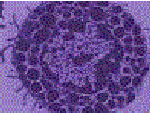

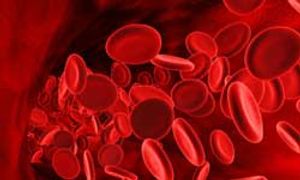
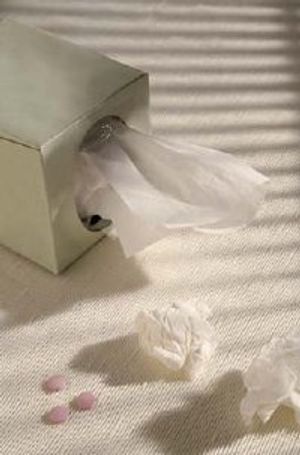
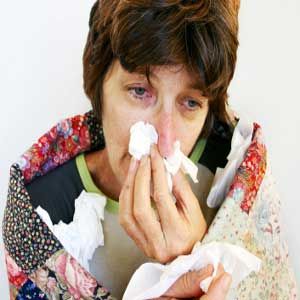
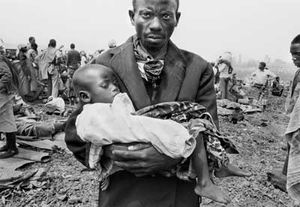
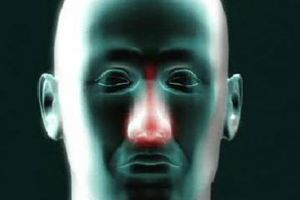


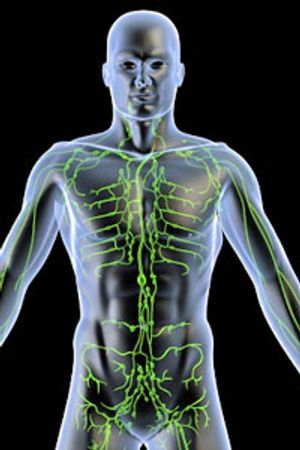

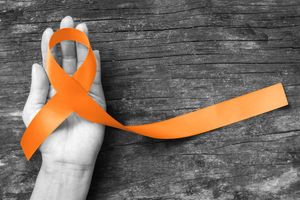
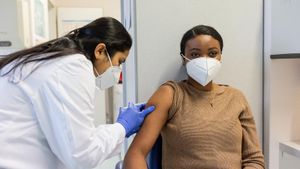




ليست هناك تعليقات:
إرسال تعليق